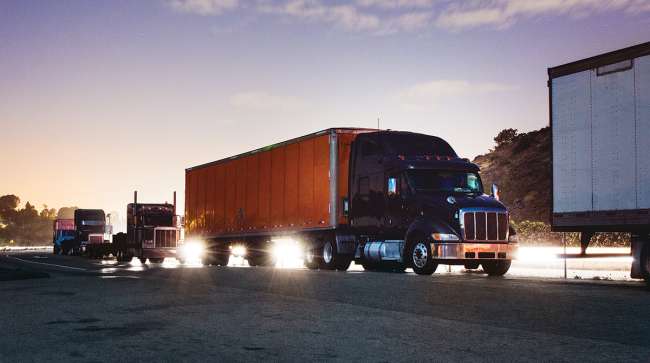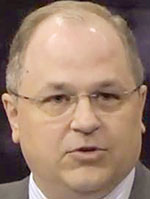Senior Reporter
FMCSA, Others Tackle Truck Parking Problem

Daniel Studdard calls the northern roadway approach to Atlanta a “no man’s land” for truck drivers searching for a place to park their rigs.
“Truckers really have to plan ahead, and if they get hit with some unexpected traffic and are running out of hours of service, it’s a big challenge for them,” said Studdard, principal planner for the Atlanta Regional Commission.
He’s working hard to change that.

Studdard
“Locally, we’re hearing from planners and elected officials in our region that this is a growing issue,” Studdard said during the Dec. 6 annual web conference of the National Coalition on Truck Parking. “They’re seeing more trucks parked on the side of highway ramps, vacant lots and other unauthorized locations where they really do not want to see trucks parked.”
RELATED: Drivers, carriers have different concerns regarding driver shortage, retention
Studdard and other participants in the presentation said that while elected officials are becoming more aware of the truck parking problem, many can’t seem to convince their residents why they should care. Truck traffic is growing faster than parking spaces, Studdard said, and zoning restrictions and apathy are making it very difficult to expand parking.
Indeed, a recent survey of 277 truck drivers who travel through the region showed that 51% spend more than an hour to find a place to park.
Certainly not all metro regions throughout the nation have traffic and parking problems as severe as Atlanta’s, but many are experiencing the same types of problems. And when drivers cannot find a good place to park for rest, they sometimes must settle for road shoulders, exit ramps and other less-than-ideal locations.
“The scarcity of truck parking is a national safety concern,” said Martin Knopp, the Federal Highway Administration’s assistant administrator for operations. “It’s a problem in all states, corridors and metro areas.” And solving the problem continues to be a “multifaceted challenge,” Knopp said.

Knopp
But the coalition, along with federal regulators, is trying to meet that challenge. Of note is a truck parking study by the Federal Motor Carrier Safety Administration that will survey and assess parking technologies, conduct a market analysis of cost and finance issues, research opportunities and barriers, and develop a strategic plan for accelerating “SmartPark” deployment, said Jeff Loftus, FMCSA’s technology division chief.
Those working on the issue through an FHWA and NCTP joint effort are hoping to see progress as they near completion of a second comprehensive Jason’s Law Truck Parking Survey of truck parking availability. The first survey, which began documenting the parking shortage, was in 2014. The next edition will update the inventory of truck parking, evaluate truck travel by state, evaluate technology types to monitor availability and demand for parking, and compile state and regional metropolitan planning organization truck parking plans, studies and projects.
They have divided their efforts into working groups looking at capacity, technologies, funding, and state, regional and local coordination. The groups expect the survey will be completed by early next year.

Truck parking in Wamsutter, Wyo. (Google Maps)
Already, the working groups have seen an array of examples of creative approaches to fix the problem:
- Meijer, a grocery store chain, is providing a truck parking “bullpen” adjacent to the entrance of its distribution centers, allowing drivers to park outside a fenced-in delivery area.
- The Florida Department of Transportation has begun a project to install and test technologies that will monitor real-time space availability for 2,352 spaces at 45 rest areas, 20 weigh stations and three welcome centers.
- In Carson, Calif., city officials have designated specific areas in their zoning code where trucks can park for up to 72 hours.
- Metropolitan planning organizations in Boston, Arizona, Texas, and Memphis, Tenn., have included truck parking in their freight plans.
- The Wyoming Department of Transportation used a truck parking facilities program grant to build 43 parking spaces off Interstate 80 in Wamsutter, Wyo.
- Big Springs, Neb., has truck parking for up to 200 trucks on a half-clover-leaf interchange where Interstate 80 and US 138 merge.

